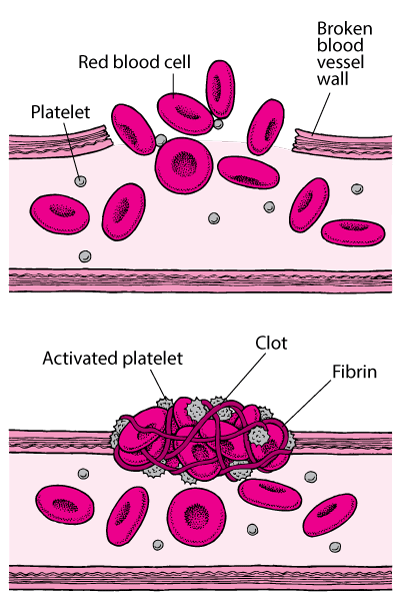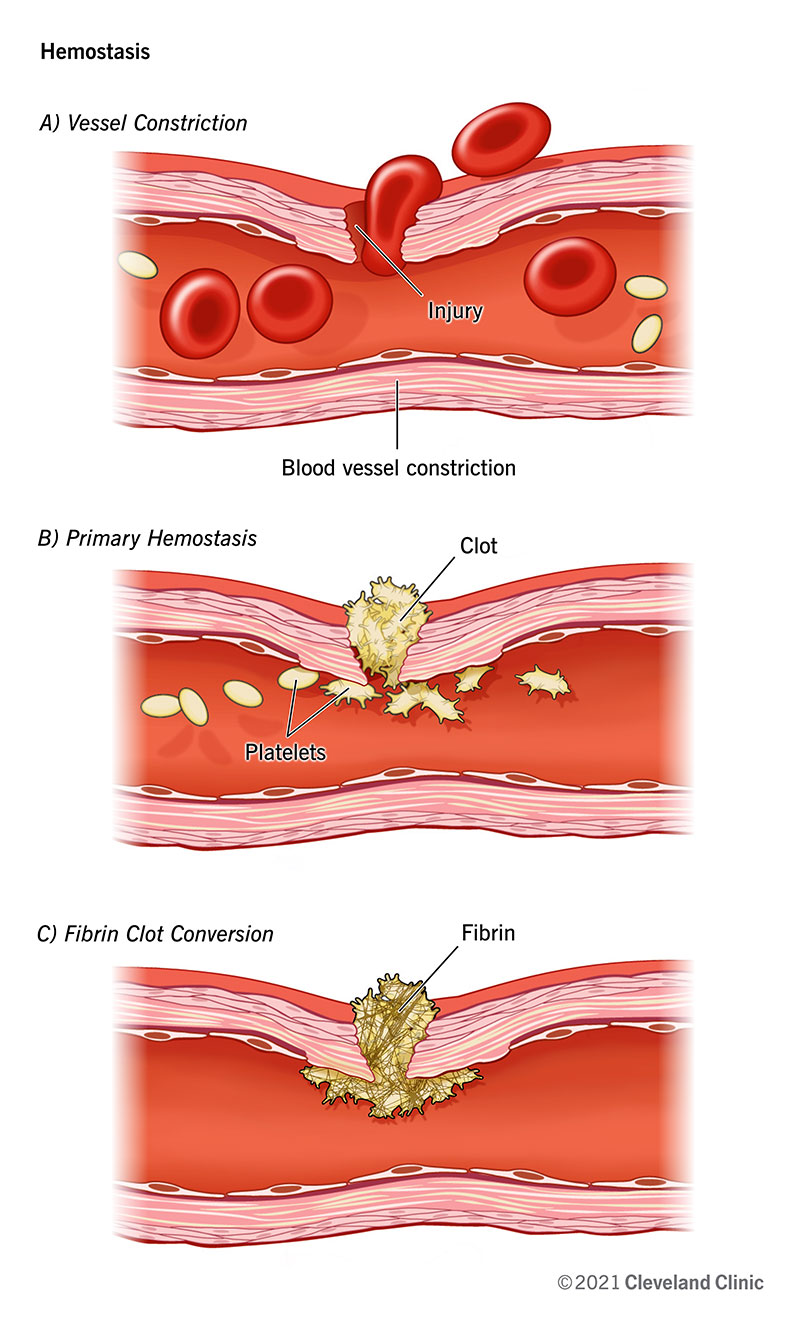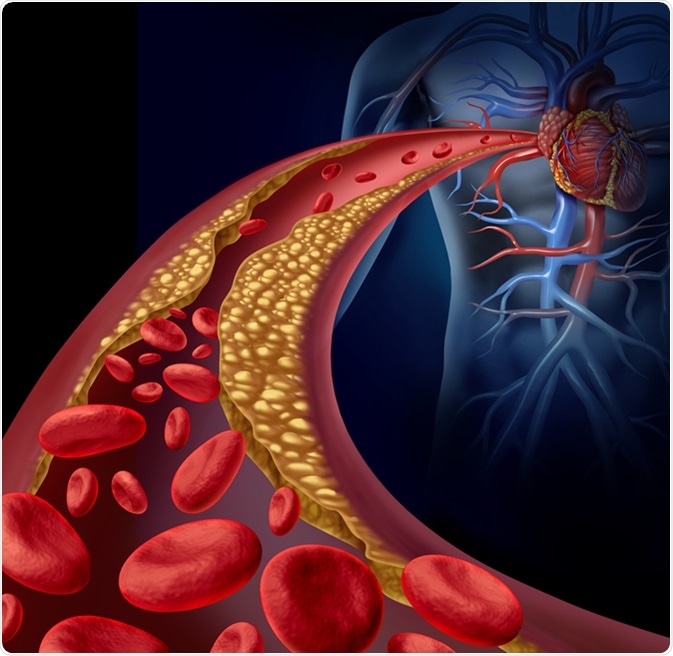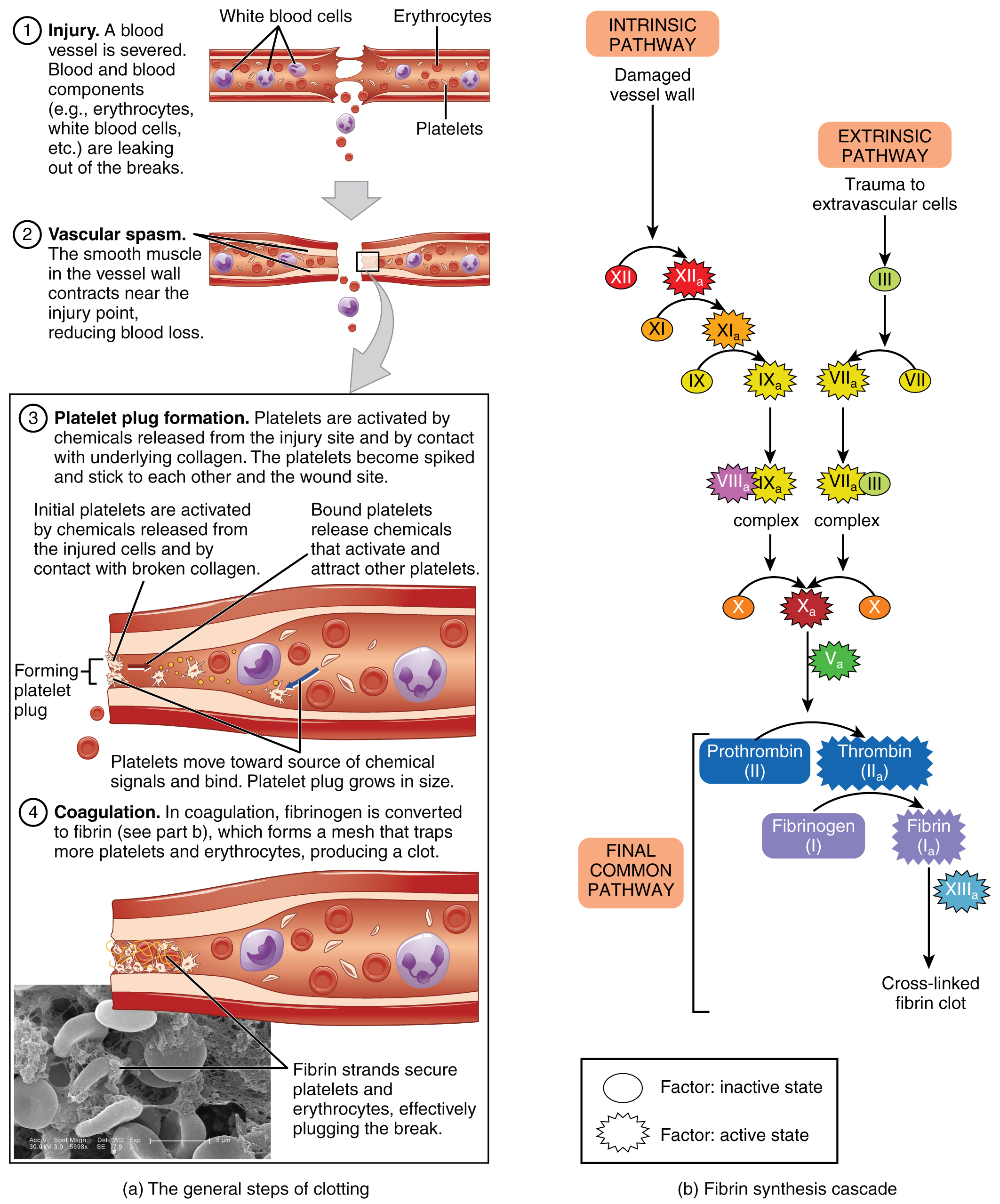The Process of Blood Clotting May Be Described as a
E rst referred to as the intrinsic or internal pathway occurs when a clot forms inside. Fibrinolysis is an enzymatic process that dissolves the fibrin clot into fibrin degradation products FDPs by plasmin originating from fibrin bound plasminogen in liver.
Fibrin is created in threads which results.

. When specific elements of this process are missing or dysfunctional abnormal bleedings or thrombosis may occur. Blood clotting or clotting of blood which also refers to the process called haemostasis is the formation of a gel-like or clot-like structure preventing bleeding or loss of blood ie haemorrhage in cases of injured blood vessels. Blood clots may have been under-diagnosed in patients with COVID-19.
Coagulation factors Substances in the blood that act in. Fibrinolytic system is a parallel system which is activated along with activation of coagulation cascade and serves to limit the size of clot. Often described as a cascade the formation of blood clots stems from platelets which activate.
Coagulation cascade The sequence of biochemical activities involving clotting factors that stops bleeding by forming a clot. When the entire coagulation process works properly blood holds firmly together at the site of an injury and bleeding stops. Platelets and protein eg.
Regardless of initiation factors the process is a sequence of events in which the activation of one factor triggers another until after a series of discrete steps fibrin is formed. The process of blood clotting may be described as. It can trigger an inflammatory process leading to blood clot formation.
One drawback of a circulatory system such as ours in which the liquid blood is under high pressure is that serious bleeding can take place after even a slight injury. Thrombin then transforms circulating fibrinogen into the fibrin meshwork that mechanically reinforces the hemostatic plug. Blood clotting or coagulation is a biological process that stops bleeding.
Coagulation is the process by which a blood clot forms to reduce blood loss after damage to a blood vessel. Hemostasis is the normal process by which the clotting cascade seals up vascular damage to limit blood loss following injury. How a Blood Clot Is Made.
The blood clotting process are vasoconstriction platelet activation thrombus formation and dissolution of the clot. When the human body is injured a natural healing process is initiated in order. Blood clotting is initiated in one of two ways.
Fibrin components are involved in blood vessel repair. Thrombi are most commonly caused by vessel damage to the endothelial lining which activates the clotting mechanism. The entire process of blood clotting may be referred to as hemostasis.
The result is a meshwork of a protein called fibrin. Its vital that blood clots when we have a surface injury that breaks blood vessels. Thrombosis is a group of pathologic conditions in which the clotting cascade is triggered inside the lumen of a blood vessel leading to the formation of a blood clot known in this case as a thrombus that can impede the flow of blood within a.
The three stages of blood clotting are the vascular phase the platelet phase and the coagulation phase. The sequence of reactions among these plasma proteins collectively described as the blood clotting process produces the enzyme thrombin. These may include venous stasis when blood in the veins particularly in the legs remains stationary for long periods.
The plasma coagulation system in mammalian blood consists of a cascade of enzyme activation events in which serine proteases activate the proteins proenzymes and procofactors in the next step of the cascade via limited proteolysis. Several components of the coagulation cascade including both cellular eg. The process takes place in order to prevent the body from losing too much blood due to injury.
A series of reactions takes place when a blood vessel is broken or cut. Blood clotting may occur through many pathways and be initiated by many different stimuli. The blood clotting process is a multistep activity known as coagulation.
Blood clotting is a normal function that occurs. Formation of a blood clot called coagulation results from a series of reactions occurring in cascade. The blood clotting process or coagulation is an important process that prevents excessive building in case the blood vessel becomes injured.
Factors mechanism and inhibitors Hemostasis mechanism of preventing blood loss. For a small break in a blood vessel the sequence of vascular spasm platelet plug formation and coagulation results in the break being sealed off. Blood clotting or coagulation is a biological process that stops bleeding at the site of vessel injury.
Coagulation is the process of forming a blood clot. These reactions break the platelets making them stick to the blood vessels edges. The ultimate outcome is the polymerization of fibrin and the activation of platelets leading to a blood clot.
When you have a bleeding disorder youre unable to make strong clots quickly or at all. The platelets in turn release other chemicals that commence the blood clotting mechanisms. Basic laboratory tests used to identify blood clotting problems will also be presented.
This process involves many proteins and is highly regulated. In a small vessel it may actually totally block the flow of blood and is termed an occlusive thrombus. Clotting can prevent us from bleeding to death and protect us from the entry of bacteria and viruses.
The plasma protein fibrinogen is converted into a non-globular and insoluble protein called fibrin. Blood loss is reduced and healing can begin. Coagulation The process of blood clotting.
Of the colloidal clotting factors which is so complex. Positive feedback mechanism that may become a vicious cycle once a clot has formed in a ruptured vessel the area to be repaired is made smaller by.

Hemostasis Stages And How The Process Stops Blood Flow


Comments
Post a Comment